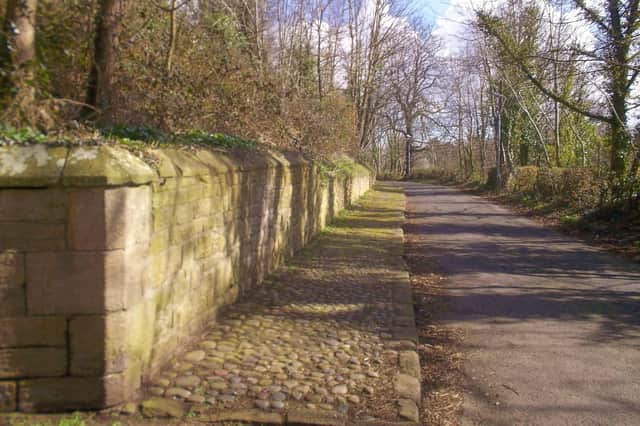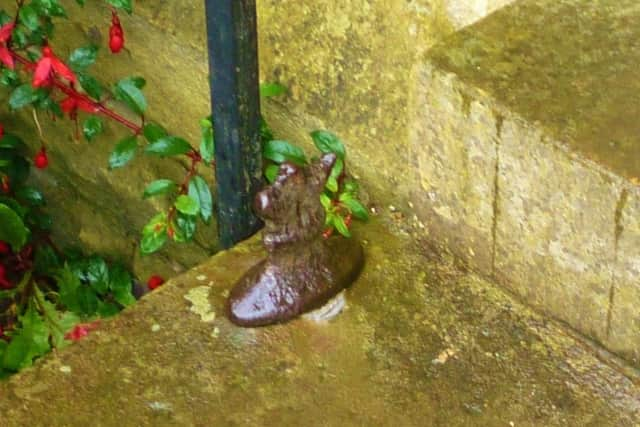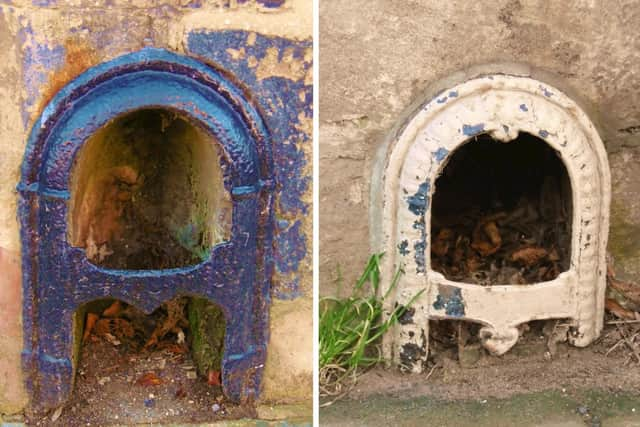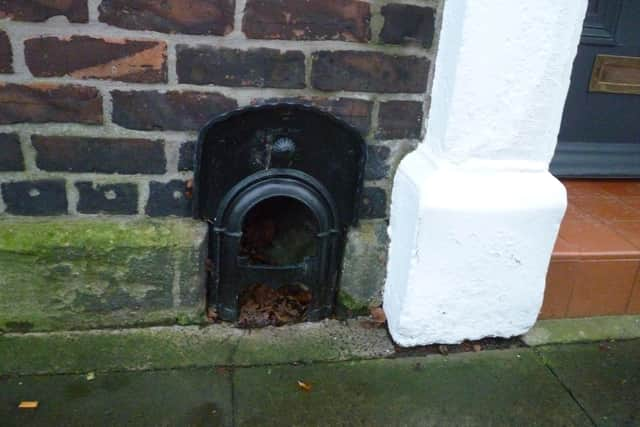Morpathia: Obsolete and curious – Boot scrapers


There are, or were, three types:
- Groundfast, i.e. embedded in concrete, stone etc.
- Inset, which are built into a wall.
- Freestanding, which come in a variety of types and are the only kind in regular use today.
Groundfast and inset scrapers belong firmly to the Victorian period, so you will only find them in the older streets of a town – and even then not always.


We in our day and age may think that the streets could be better than they are, but they are a vast improvement on what used to be.
Advertisement
Hide AdAdvertisement
Hide AdAlec Tweddle, in his Town Trail No. 4, says that the Church Peth in Spelvit Lane was, “... specially paved for pedestrians (seemingly by order of the Earl of Carlisle in 1690) above the level of the parallel King’s Highway to Newcastle.
“By pack horses and other traffic, this latter road was so often rendered impassable for pedestrians that townspeople are said to have made this muddy road their excuse for not attending the parish church!”
The Church Peth is surfaced with river cobbles, a kind of paving called “pitched”. At that time and for the next 150 years, that was how many of the best streets in a town would be paved.


You only have to walk a few yards on the Church Peth, however, to know how uncomfortable it is.
Advertisement
Hide AdAdvertisement
Hide AdAway from the main streets, and especially in the poorest yards, the carriageways and footpaths were alike unpaved, so that they were always either muddy or dusty, depending on the weather.
In Jane Austen’s day, well-to-do ladies wore pattens (iron frames fitted to their boots) when walking in muddy weather. Both then and later, boots and clogs were the normal out-of-doors footwear; my grandfather was born in 1878 and lived to be 92. Typical of his generation, he always wore boots.
In 1836, the new Morpeth Town Council found a cheque for £500 in the Town’s Hutch and used it to pave the footpaths of the main streets – but the carriageways, yards and side streets stayed as they were.


Mud and dust were not the only problems. The heyday of Morpeth’s cattle market was the roughly 100 years that ended when the East Coast Main Line was completed in 1850.
Advertisement
Hide AdAdvertisement
Hide AdUntil then, every Wednesday, cattle and sheep pens filled most of Bridge Street, the Market Place and the lower part of Newgate Street, so that all three were liberally coated with dung, and although the market was held early in the day and the ordure was cleaned up soon after, there must always have been some left to stick to people’s boots.
This kind of nuisance went on even longer in some of the yards. Until 1904, when the abattoir was built, the town’s butchers did their slaughtering behind their shops, leaving the access to the poor people’s houses foul with offal, which again left its traces even after it was cleared away.
Horses and dogs were allowed to foul the streets at any time and this only declined with the final disappearance of horse-drawn carts in the 1940s and, in the case of dog dirt, with changes in the law in the 1990s.
There was a slow improvement after the establishment of the Local Board of Health in 1851 and there were technical developments such as granite setts – effectively an improved version of the river cobble, and, later, concrete flagstones.
Advertisement
Hide AdAdvertisement
Hide AdBut it was the development of tar-macadam in the 20th Century that finally resolved the problem of muddy roads and pavements. Before then, you can easily see why boot scrapers were needed.
Groundfast scrapers are actually quite rare; they present a tripping hazard, which insets do not. The second picture in this article shows one at St George’s Church, dating from 1850.
Howard Terrace, near to where I live, was largely complete by 1860 and has inset boot scrapers. The houses on the north side of the road, however, and in the adjoining streets (Hood Street, etc.) have none.
Building did not begin on that side until 1890, so I take it that they had decent paving from the start and consequently had less need.
Advertisement
Hide AdAdvertisement
Hide AdThe design of the inset was much the same everywhere – a cast-iron arch near the front door, with a bar to scrape your boots on and a space cut into the wall behind. Many of them, I fear, are sadly neglected, but some householders have them smartly painted and a few have even renewed the cement fillet around them.
Even plain door scrapers, like the one in our illustration, have some ornamentation. Our next, painted white, is more ornate with a sort of egg-and-dart pattern round the arch, an ornament of some sort at the top and an ace of spades below the bar.
Our third was clearly intended for the discerning buyer. The outer rim of the arch is detailed with a fine bead pattern and the upper part has a backing plate with a scalloped edge and a thing like a doorknob in the middle.
I cannot for the life of me work out what it was for, but it looks very fine.
Advertisement
Hide AdAdvertisement
Hide AdA common type in my young days was a sort of iron doormat. It was made of flat rods of galvanised iron, each about half an inch wide, arranged so that you scraped your shoes on the upturned edges. They were utterly functional and I haven’t seen one in years.
Talking of boot scrapers, my grandfather once knocked Field-Marshal Lord Roberts down. Grandad was a medical orderly in the St John Ambulance during the Boer War and when the British captured Bloemfontein, the capital of the Orange Free State, the parliament house was converted into a military hospital.
The hospital had two large boot scrapers at the entrance. They took the form of a cast-iron tray. The actual scraper was mounted on a flat insert that could be lifted out for cleaning.
An officer who was visiting a friend tied his horse’s rein to the scraper, not realising that it was loose. The horse, being troubled by flies, reared its head.
Advertisement
Hide AdAdvertisement
Hide AdThe boot scraper lifted up and banged the poor horse on its front legs. It took fright and careered off down the road.
Grandad was outside, I think he said having a cigarette. Seeing the horse bolt, he ran after it and collided full force with a little man who happened to be in the way. It was Lord Roberts.
Grandad helped him to his feet, apologising profusely. Lord Roberts merely asked him his name and unit and carried on.
Grandad spent that night worrying what was going to happen, but “never heard no more about it”.